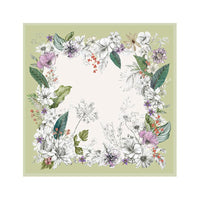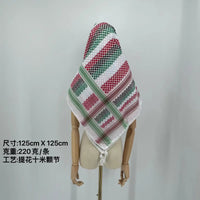It's not always just black and white, you know.
Before cotton made its way from India and Egypt, the keffiyeh – also known as the shemagh in Jordan and Syria, and the ghutra in Gulf countries – was thought to be crafted from wool. This headpiece, distinctly Arab yet non-religious, is worn by Arab Christians, Muslims, Druze, and secular folks across the region. And the best part? It comes in a variety of colors and designs!
While the Palestinian and Syrian versions stick to the classic black and white, others have their own unique patterns.
In Gulf countries like Bahrain, the UAE, and Qatar, people prefer a plain white ghutra. This spotless, light cotton garment serves as a shield against the relentless heat all year round. But when winter rolls in, a heavier fabric in darker, subtler shades takes over from the summer headwear. It's usually draped over the head and secured with a black igal cord. And for the younger guys, wrapping the ghutra in a turban style known as hamdaniya is all the rage.
Now, let's talk about the Saudis and Jordanians. They've got a red-and-white chequered shemagh, said to be inspired by the Brits.
Legend has it that British General John Bagot Glubb designed this headdress in the 1930s. His aim? To distinguish the Arabs loyal to British rule. According to scholars Widad Kawar and Ezra Karmel, it was made in British cotton mills and soon became part of the uniform for Britain's colonial police force, the Palestine Police Force.
And guess what? A version without the signature Jordanian tassels found its way into Saudi Arabia, where it's also wrapped and twisted in all sorts of stylish ways.





